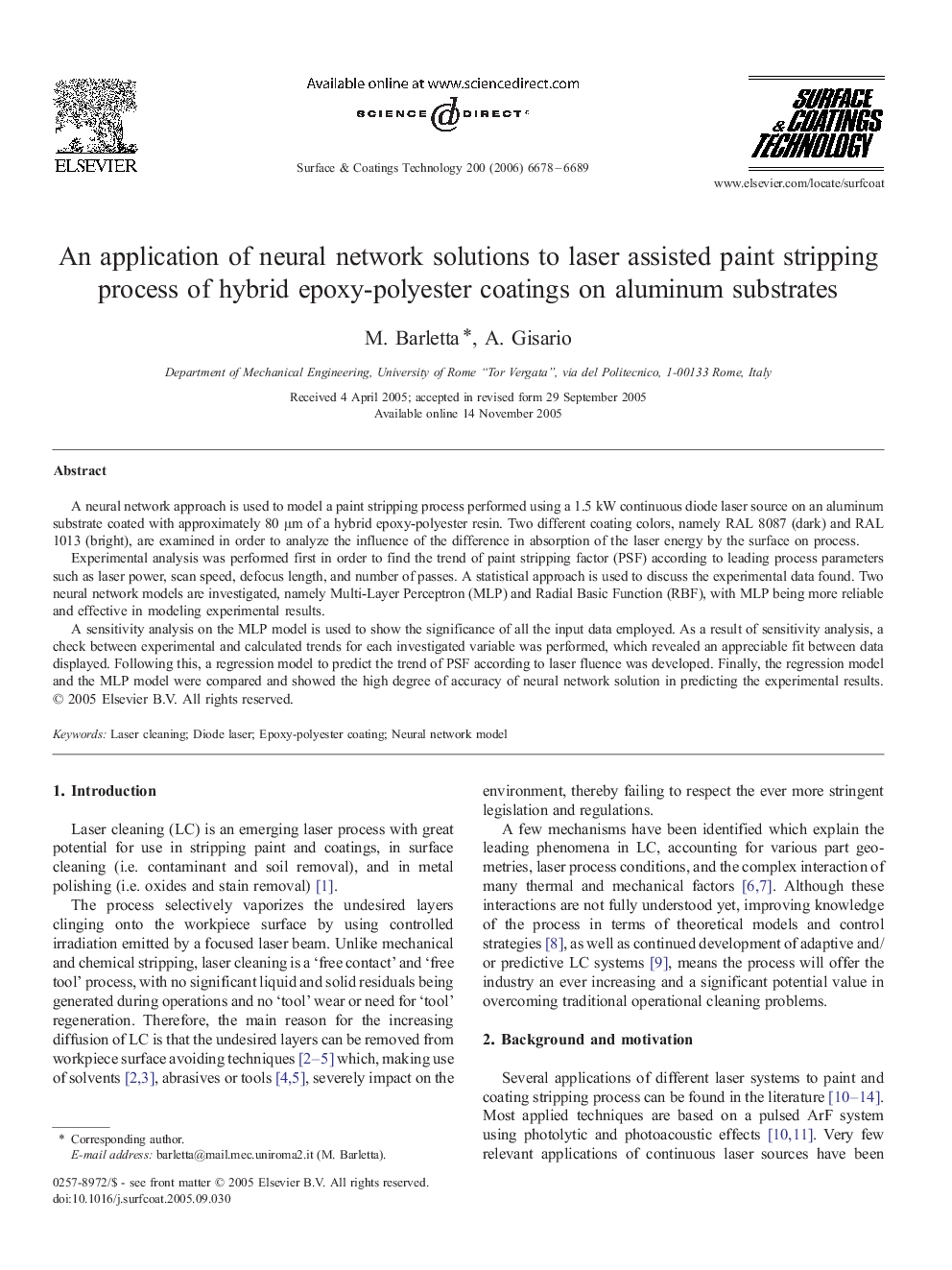| Article ID | Journal | Published Year | Pages | File Type |
|---|---|---|---|---|
| 1663131 | Surface and Coatings Technology | 2006 | 12 Pages |
A neural network approach is used to model a paint stripping process performed using a 1.5 kW continuous diode laser source on an aluminum substrate coated with approximately 80 μm of a hybrid epoxy-polyester resin. Two different coating colors, namely RAL 8087 (dark) and RAL 1013 (bright), are examined in order to analyze the influence of the difference in absorption of the laser energy by the surface on process.Experimental analysis was performed first in order to find the trend of paint stripping factor (PSF) according to leading process parameters such as laser power, scan speed, defocus length, and number of passes. A statistical approach is used to discuss the experimental data found. Two neural network models are investigated, namely Multi-Layer Perceptron (MLP) and Radial Basic Function (RBF), with MLP being more reliable and effective in modeling experimental results.A sensitivity analysis on the MLP model is used to show the significance of all the input data employed. As a result of sensitivity analysis, a check between experimental and calculated trends for each investigated variable was performed, which revealed an appreciable fit between data displayed. Following this, a regression model to predict the trend of PSF according to laser fluence was developed. Finally, the regression model and the MLP model were compared and showed the high degree of accuracy of neural network solution in predicting the experimental results.
